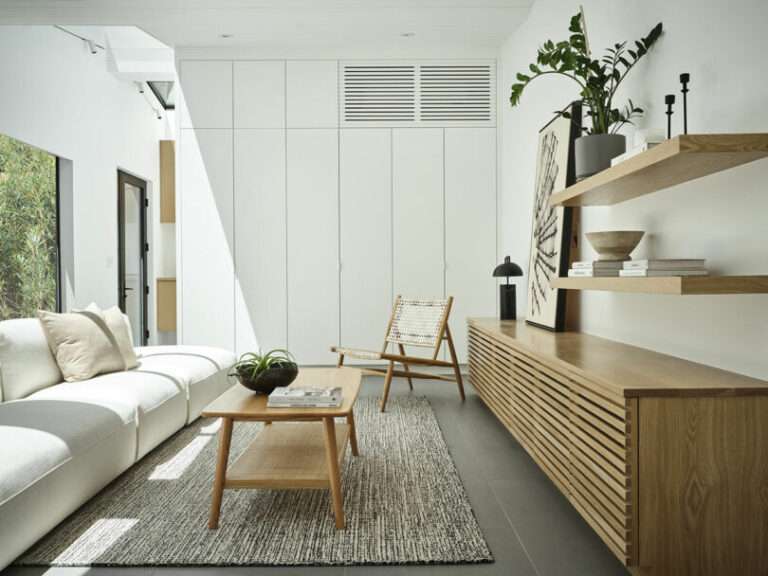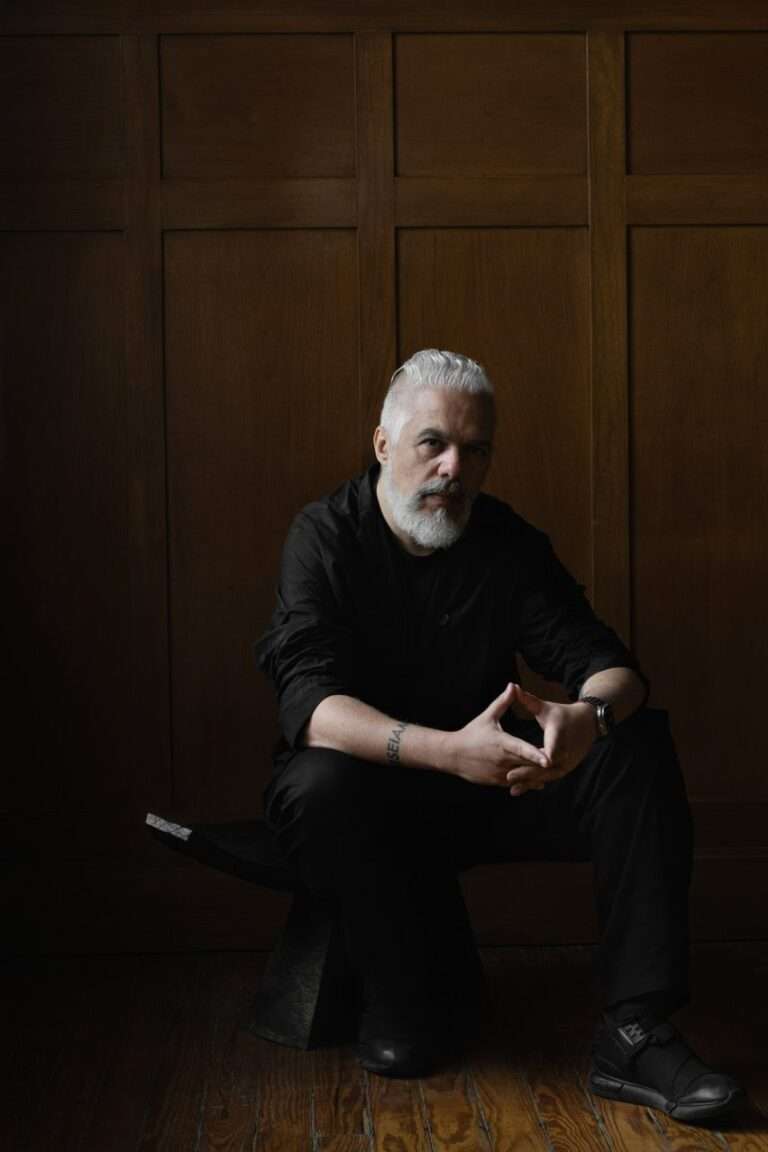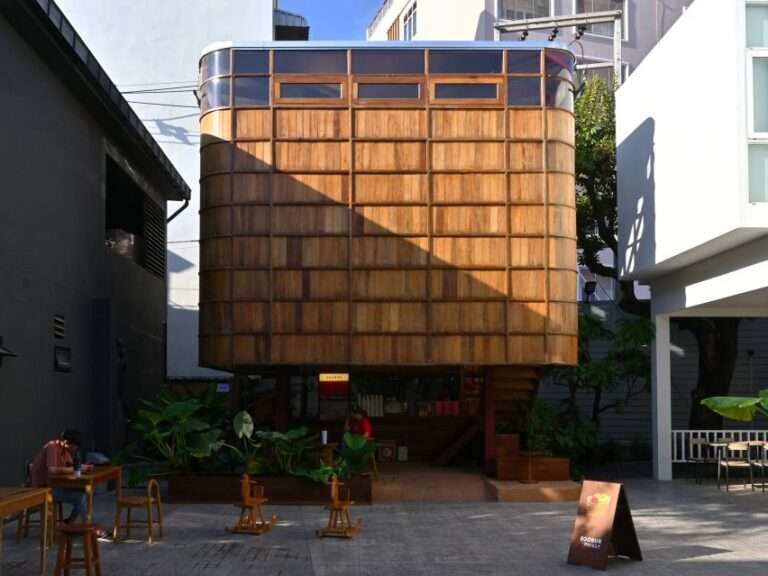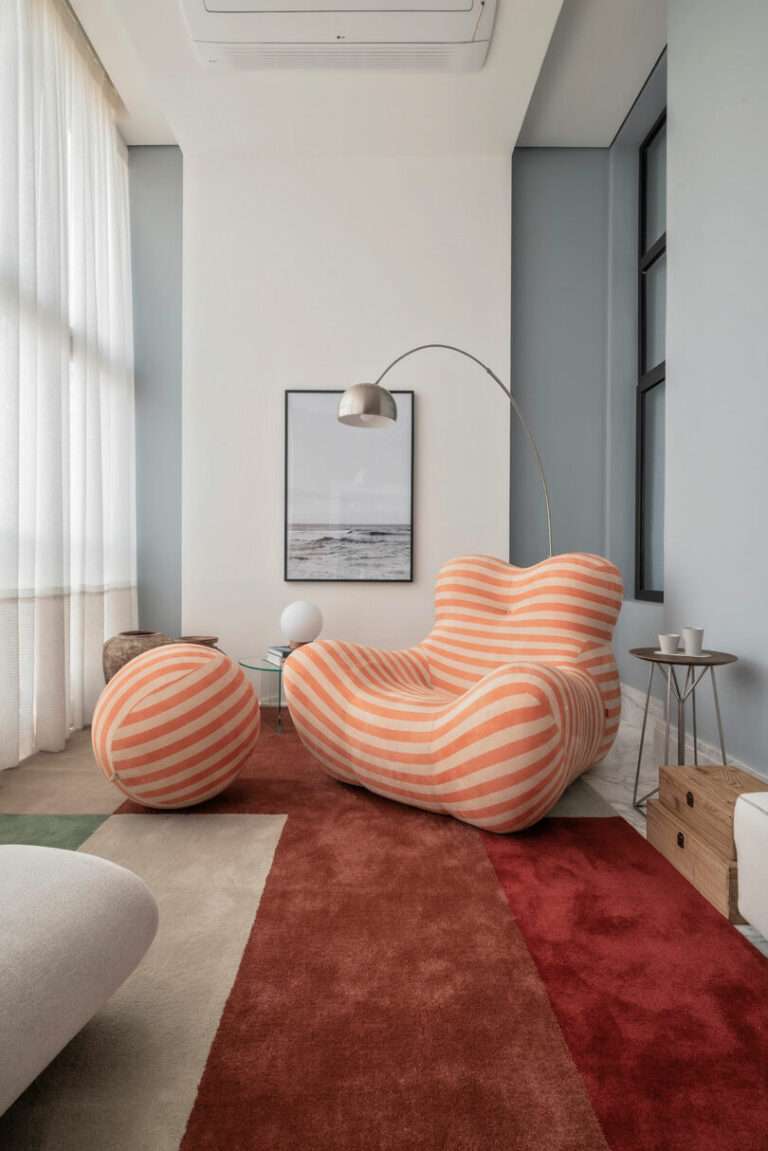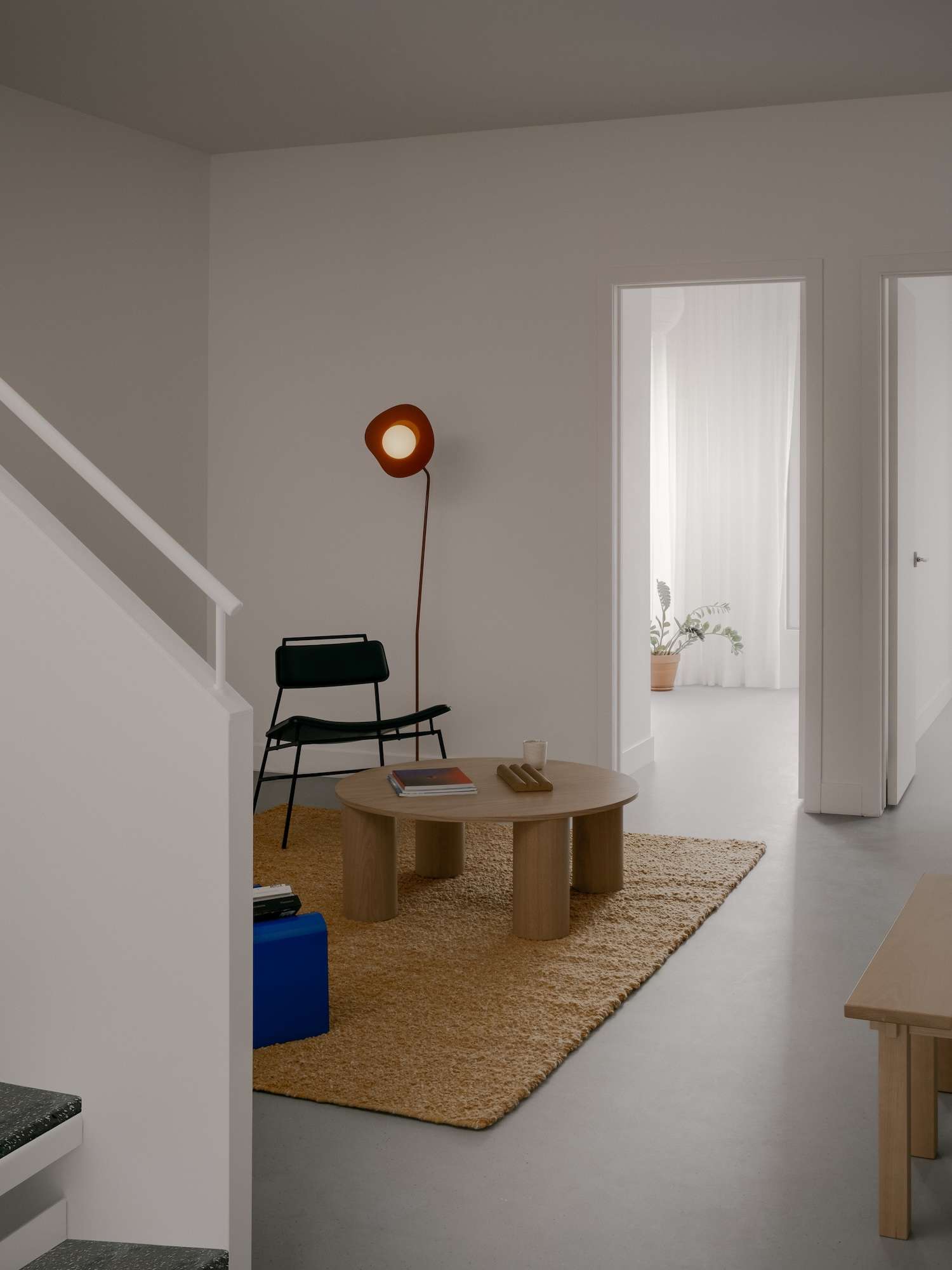
Le Binôme is a minimal home located in Montreal, Canada, designed by Appareil Architecture. The materiality of Binome speaks in hushed tones to its industrial surroundings. Red brick—that most humble and historically resonant of building materials—is deployed with subtle sophistication, forming rhythmic colonnades that echo the neighborhood’s manufacturing past while introducing a contemporary cadence to the streetscape. These arched brick sequences create what might be called “thresholds of belonging,” transitional spaces that mediate between the public realm and the sheltered communal heart of the project.
What distinguishes Binome from countless other infill developments is its refusal to treat density as merely a mathematical equation. Instead, the architects have approached it as a qualitative challenge, asking not just how many units can fit on the lot, but how those units might foster both independence and interconnection. The through-units, with their natural cross-ventilation and dual aspects, recall the spatial logic of traditional Montreal triplex apartments while reconfiguring them for contemporary expectations of light and air.
The project’s commitment to materiality extends to the finest grain of detail. Custom kitchen islands in white oak, walnut, or colored metal become tactile anchors in each unique dwelling. In the courtyard, glass blocks perform a delicate dance of revealing and concealing—diffusing light while preserving privacy in a manner that recalls Pierre Chareau’s Maison de Verre, yet with a distinctly North American pragmatism.
“We hoped this project would attract people who love architecture, creativity, and community—and that’s exactly what happened,” says Labrosse. This statement reveals how design can function as a kind of social curation, creating spaces that select for certain ways of living and being together. The central courtyard—that space of neither/nor, neither fully public nor fully private—becomes the stage for what sociologist Ray Oldenburg might call “the great good place,” where casual encounters build the social fabric.
In its eco-conscious features—sloped green roofs, edible plantings, rainwater management—Binome gestures toward a future where urban housing might contribute to rather than detract from ecological systems. Yet these elements avoid the loud proclamations of sustainability that characterize much contemporary architecture, instead integrating them seamlessly into the project’s overall logic.
